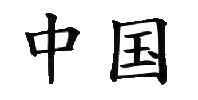China Beat Archive

China Beat Blog: Archive 2008-2012
Date of this Version
5-1-2009
Document Type
Article
Citation
May 1, 2009 in The China Beat http://www.thechinabeat.org/
Abstract
Last Friday, China Beat and the UCI International Center for Writing and Translation (ICWT<) hosted a public roundtable with UC Riverside professor Perry Link and Tiananmen activist Wang Chaohua weighing in on the China side, and writer Pankaj Mishra (a frequent friend of the China Beat) and UCI professorVinayak Chaturvedi speaking about India. China Beat and UCI’s Jeff Wasserstrommoderated the roundtable discussion, and asked the panelists to consider “dates ending in 9” of specific relevance for China (1919, 1949, 1959, 1979, and 1989) and India (where 9-2 seems to be a more pertinent number, as in 1857 and 1947).
Vinayak Chaturvedi began with a discussion of 1909 as the year of publication of 2 foundational texts in Indian nationalism: Gandhi’s Hind Swaraj (or Indian Home Rule) and Vinayak Damodar Savarkar’s Indian War of Independence: 1857, a history of the 1857 “mutiny” (if you were British) and “war of independence” (if you were Indian). [Readers who are intrigued by the reflections of one Vinayak, a UCI professor, on another Vinayak, a Hindu nationalist, can read Dr. Chaturvedi’s article on the same subject in Social History vol. 28 no. 2 (May 2003).] Gandhi’s text and work laid the foundations for the heterogeneous nationalism of a multi-ethnic state as carried forth in the Congress Party, and Savarkar’s text laid the foundations for a militant Hindu nationalism that excludes Muslims and a long list of others, as seen in today’s Bharatiya Janata Party (BJP). The two parties and two versions of Indian nationalism have long contested one another, but in the meantime neither has fulfilled its promises to the Indian people.
In addition to being a long-term activist, Wang Chaohua is also an academic with research interests in the May Fourth movement of 1919, and editor of the pre-eminent collection of contemporary Chinese intellectuals’ essays, One China, Many Paths. She argued that the best way to understand Tiananmen in 1989 is to compare it with 1919. In both periods the Chinese government was rather disoriented and fairly weak, and activists used similar methods of organizing themselves. The most important common feature is that in both movements, activists allied across class and occupation to create a broader social movement of students, laborers, and white-collar urban workers. Unfortunately, Dr. Wang ended on a sad note. Many people ask her about the prospects of greater freedom for mainland Chinese, but she feels that the current University students in China are even more urban and bourgeois than before so they are less likely to create such a broad-based movement.
Included in
Asian History Commons, Asian Studies Commons, Chinese Studies Commons, International Relations Commons


Comments
Copyright May 1, 2009. Used by permission.